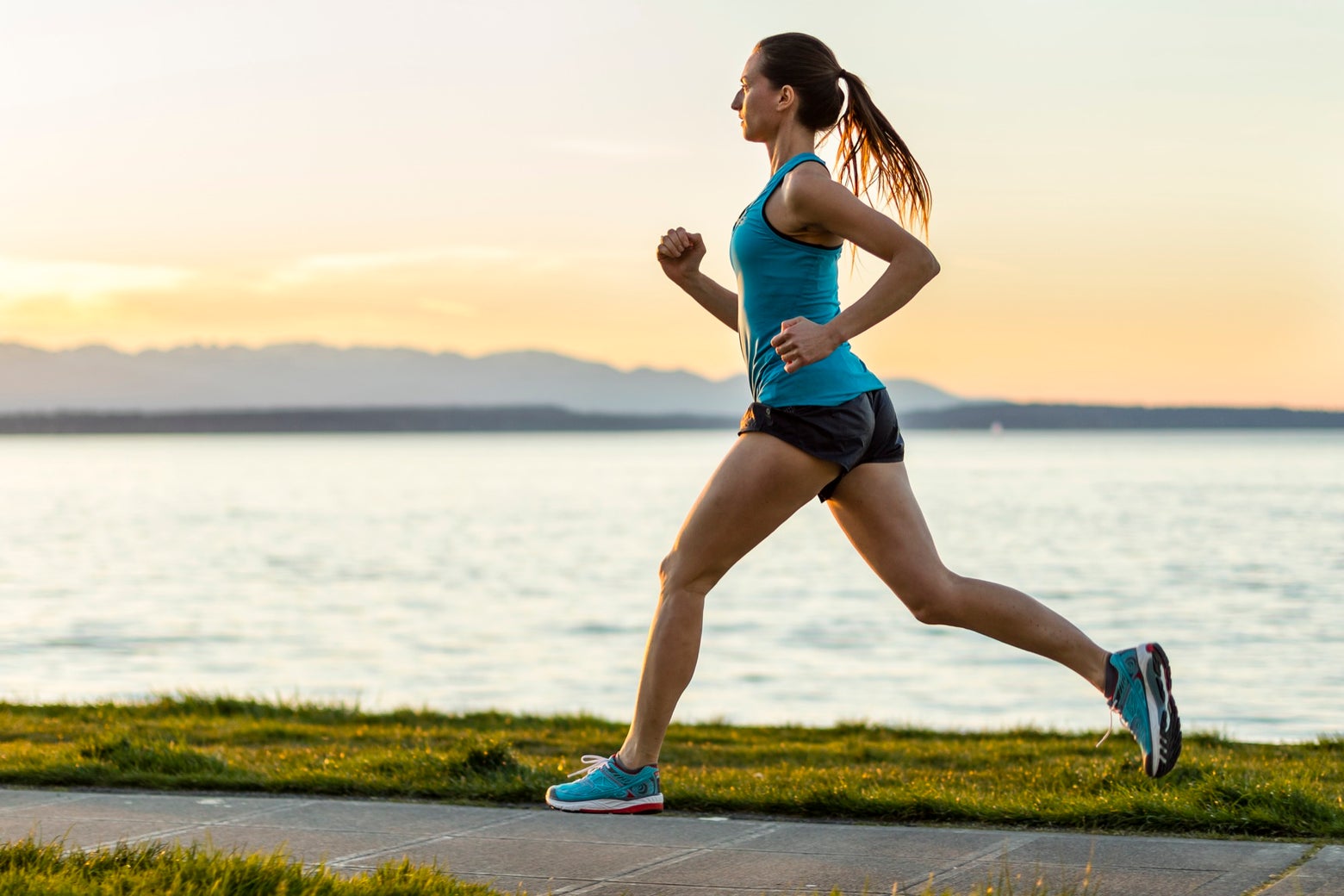How to Be a More Environmentally Friendly Runner
5 Tips to Run Sustainably
Updated by Brycen Cicero

Whether it be the waves from the beach or the white peaks of mountains, every runner loves to train alongside a beautiful view. All that is asked in return for these stunning views is that the environment is appreciated and treated with care. Even though it will vary from person to person, every step you take to be more sustainable helps preserve our planet for future generations. We have listed below five of our favorite ways to become a more eco-friendly runner.
Tip #1: Purchase Quality Over Quantity
Every year, the fashion industry produces over 100 billion garments; 87% of these garments find a home in a landfill or an incinerator. Even worse, only 1% of all discarded clothing is recycled. The average person today buys 60% more articles of clothing compared to 15 years ago and will keep them for half as long.
Given the high consumer demand for products, there is no need to slow down production. Therefore, the most sustainable practice would be not to make any unnecessary purchases. Of course, every runner loves multiple styles and color options, but we recommend only updating your wardrobe when necessary. When it is finally time to upgrade your gear, make sure to purchase pieces that last for years instead of months.
Paying that extra $20-30 for a more quality product now, in the long term, will be more beneficial than going with the less expensive option. When you pay extra, the difference may not be apparent at first. However, after multiple wears and washes, the more expensive item delivers the same comfort and wicking abilities as when first worn. You will see no signs of stitching fraying or holes from being overstretched.
In addition, you will notice a difference in the durability and elemental protection of quality products. An example of this would be when buying a water-resistant jacket. Generally speaking, the lower the price, the less weather protection and performance technologies the garment possesses. Instead of struggling through a run with less expensive coverage, the more sustainable (and better value) option is to purchase a quality jacket that will last for years while protecting you from the elements. Not only will you be satisfied with how well the product benefits your run, but you no longer have to shop every season to replenish your workout wardrobe.

Tip #2: Shop for Brands with Sustainability Initiatives
As discussed earlier, the fashion industry is a large producer of waste on a global scale. Over 80% of a product's environmental impact is determined during the concept and design stages. Because of this, brands are rising to the challenge of improving their production practices for more sustainable products.
Most brands have taken some initiative in moving toward a more sustainable production. At Running Warehouse, we highlight sustainable products with a green leaf icon. This icon is displayed on clothing & accessory products created with at least 75% recycled or sustainable material and footwear made from at least 25% recycled or sustainable material. Even if they do not meet our strict requirements to be labeled "sustainable," there are still a variety of production techniques that brands have adapted toward becoming more sustainable.
Many brands feature third-party certifications like bluesign certified, Fair Trade certified, the Global Recycled Standard (GRS), or using solar-powered factories to provide sustainable products. These third-party verifications use strict guidelines and restrictions to improve the production processes for more sustainable output. Some notable brands that use these third-party verifications include Patagonia, The North Face, Saysky, and adidas. We took a deep dive and examined the requirements and processes of these certifications in our guide on Sustainable Gear.
Tip #3 Consider Run Commuting
When given the opportunity, choose to go for a walk or run instead of driving to your destination. Due to the American infrastructure, this is logistically challenging in most places, but when public transportation is available (or your journey is walkable), doing so benefits the environment. As a plus, these extra walking excursions will help you reach those much-needed steps and miles for the day.
In cities with high traffic and car pollution, "run commuting" is a popular practice. With gas prices steadily rising throughout the years, run commuting can be a great way to save money on fuel. In return, the money saved can be invested into higher quality run products or other necessities of life.
Another benefit of running on your daily commute is the time you save. When you're running, walking, or biking, you don't have to experience getting stuck in traffic. In some heavily populated cities, pedestrians move faster than the average traveling car. With run commuting, you can get a workout in the time you already have dedicated toward your work commute, leaving more time to get the rest and recovery needed after a long shift in the office.
Run commuting is no easy task, so it's important to prepare for a successful run commute. We recommend investing in a good backpack to carry your clothes, hydration, towels, and other necessities you need for the day. It is also necessary to plan out your route to maximize your energy and safety. Choose roads you feel safe traveling on and aren't inconvenient to run on due to pedestrians and dog walkers. Be sure to include a place to shower on your route, whether at your office or a private gym and pack the right hygiene products to stay smelling fresh.

Tip #4 Make Your Running Shoes Last
The average pair of running shoes produces 14kg of carbon emissions in its lifespan, from raw material to landfill. Nearly 300 million shoes are thrown away yearly in the US alone, and they take about 30-40 years to decompose. Most of these emissions come through the production process; however, we can still release toxic chemicals by disposing of shoes early and creating a need for more shoes. Many running shoe brands are coming out with more sustainable or carbon-neutral options; check out our selection of sustainable running shoes.
If you can't find a sustainable shoe that fits your running needs, there are ways to care for your shoes to make them last longer. Simply removing them carefully by untying the laces, cleaning and drying shoes properly, and storing your footwear in a moderate-temperature environment after use prolongs the lifespan of your shoes. Other tips include using them only for running, not cross-training, and lastly, just switching up your shoe rotation every once in a while.

Tip #5 Leave No Trace
Whether you are on the trail or at home, properly disposing of waste can go a long way toward a more sustainable environment. Here are a few tips on how to reduce waste and leave no trace:
- The first rule of thumb is to never leave any trash on the trails you are using. Although this is the standard for any public space, it is especially important on trail runs to preserve the natural environment. While on the trail, if you spot any trash, taking the extra few seconds to pick it up can make a huge impact.
- When shopping for sports nutrition and gels, we recommend buying in bulk or purchasing reusable products. What we mean by buying in bulk would be substituting individual packets for powders. On top of this, you can use a reusable soft flask to hold your nutrition and reduce packaging waste.
- Another option would be to donate your old shoes. We recommend searching for your local recycling program for an easy way to drop off your footwear. Double-check to ensure the recycling center you are using doesn't go to a landfill. Other options that might take more effort include turning in your shoes at a participating Nike store or with online outlets such as GotSneakers and soles4soles. Although it takes extra steps, these programs emphasize using old materials to give back to the community, and the latter option is the best way to ensure your shoes are being disposed of and recycled properly.
- Lastly, you can attempt to reuse old shoe boxes for various purposes. Whether for storage, school projects, or even the soil holder for plants, there are plenty of uses, so get creative with the space.









